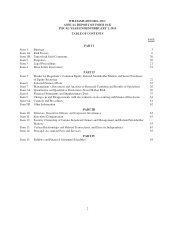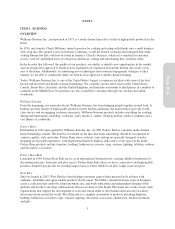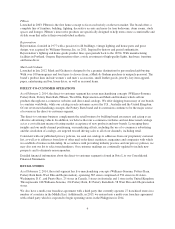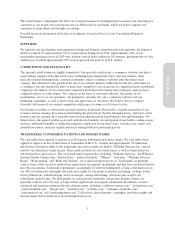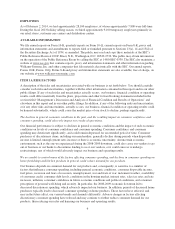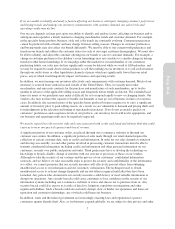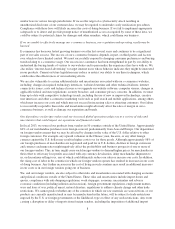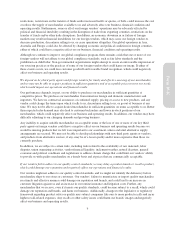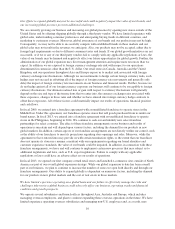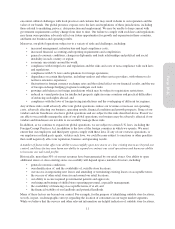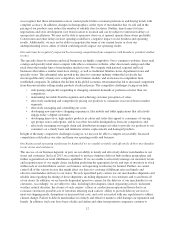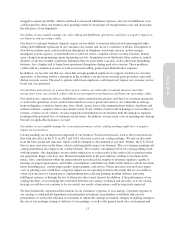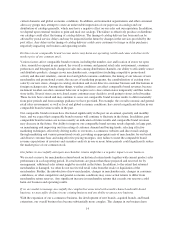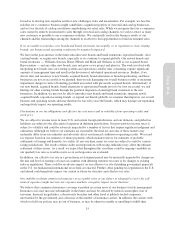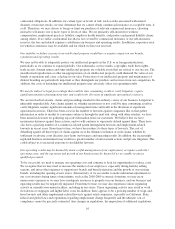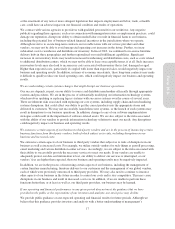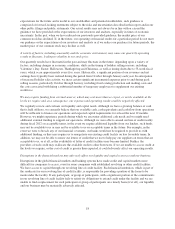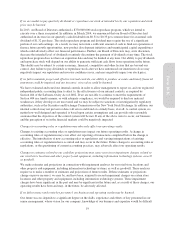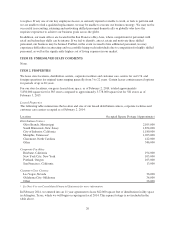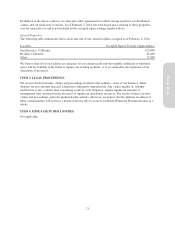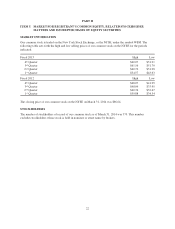Pottery Barn 2013 Annual Report Download - page 26
Download and view the complete annual report
Please find page 26 of the 2013 Pottery Barn annual report below. You can navigate through the pages in the report by either clicking on the pages listed below, or by using the keyword search tool below to find specific information within the annual report.we recognize that these information sources cannot predict future consumer preferences and buying trends with
complete accuracy. In addition, changes in demographics, in the types of merchandise that we sell and in the
pricing of our products may reduce the number of suitable store locations. Further, time frames for lease
negotiations and store development vary from location to location and can be subject to unforeseen delays or
unexpected cancellations. We may not be able to open new stores or, if opened, operate those stores profitably.
Construction and other delays in store openings could have a negative impact on our business and operating
results. Additionally, we may not be able to renegotiate the terms of our current leases or close our
underperforming stores, either of which could negatively impact our operating results.
Our sales may be negatively impacted by increasing competition from companies with brands or products similar
to ours.
The specialty direct-to-customer and retail businesses are highly competitive. Our e-commerce websites, direct mail
catalogs and specialty retail stores compete with other e-commerce websites, other direct mail catalogs and other
retail stores that market lines of merchandise similar to ours. We compete with national, regional and local
businesses that utilize a similar retail store strategy, as well as traditional furniture stores, department stores and
specialty stores. The substantial sales growth in the direct-to-customer industry within the last decade has
encouraged the entry of many new competitors, new business models, and an increase in competition from
established companies. In addition, the decline in the global economic environment has led to increased competition
from discount retailers selling similar products at reduced prices. The competitive challenges facing us include:
• anticipating and quickly responding to changing consumer demands or preferences better than our
competitors;
• maintaining favorable brand recognition and achieving customer perception of value;
• effectively marketing and competitively pricing our products to consumers in several diverse market
segments;
• effectively managing and controlling our costs;
• developing new innovative shopping experiences, like mobile and tablet applications that effectively
engage today’s digital customers;
• developing innovative, high-quality products in colors and styles that appeal to consumers of varying
age groups, tastes and regions, and in ways that favorably distinguish us from our competitors; and
• effectively managing our supply chain and distribution strategies in order to provide our products to our
consumers on a timely basis and minimize returns, replacements and damaged products.
In light of the many competitive challenges facing us, we may not be able to compete successfully. Increased
competition could reduce our sales and harm our operating results and business.
Our business and operating results may be harmed if we are unable to timely and effectively deliver merchandise
to our stores and customers.
The success of our business depends, in part, on our ability to timely and effectively deliver merchandise to our
stores and customers. In fiscal 2013, we continued to insource furniture delivery hubs in three geographies and
further regionalized our retail fulfillment capabilities. If we are unable to effectively manage our inventory levels
and responsiveness of our supply chain, including predicting the appropriate levels and type of inventory to stock
within each of our distribution centers, our business and operating results may be harmed. Further, we cannot
control all of the various factors that might affect our direct-to-customer fulfillment rates and timely and
effective merchandise delivery to our stores. We rely upon third party carriers for our merchandise shipments and
reliable data regarding the timing of those shipments, including shipments to our customers and to and from all
of our stores. In addition, we are heavily dependent upon two carriers for the delivery of our merchandise to our
customers. Accordingly, we are subject to risks, including labor disputes, union organizing activity, inclement
weather, natural disasters, the closure of such carriers’ offices or a reduction in operational hours due to an
economic slowdown, possible acts of terrorism affecting such carriers’ ability to provide delivery services to
meet our shipping needs, disruptions or increased fuel costs, and costs associated with any regulations to address
climate change. Failure to deliver merchandise in a timely and effective manner could damage our reputation and
brands. In addition, fuel costs have been volatile and airline and other transportation companies continue to
12


